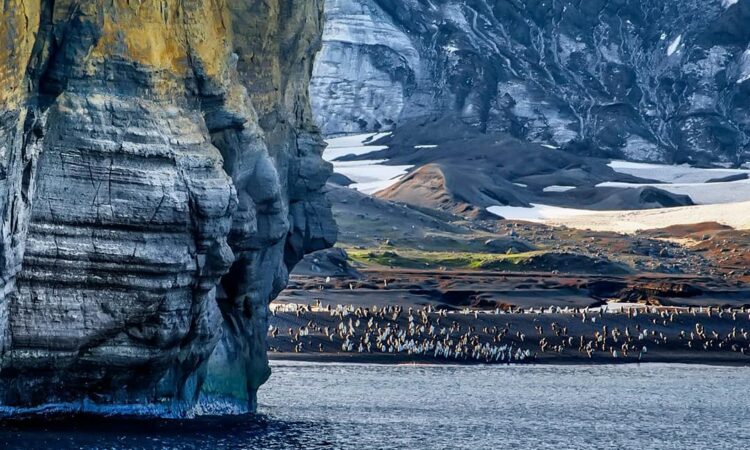The Concordia Research Station in Antarctica recorded a record temperature increase of 38.5°C above average on March 18, 2022. This caused serious concern among scientists.
Why Antarctica is heating up
Polar winds are reportedly carrying warm air inland, causing a “heat wave”. This phenomenon, along with a growing number of meteorological anomalies, indicates accelerated loss of glacier mass and decreasing sea ice levels in Antarctica.
Scientists warn that Antarctica, previously considered too cold to be affected by global warming, is now rapidly being exposed to rising levels of greenhouse gases. The study, published by Will Hobbs of the University of Tasmania and his team, points to an “abrupt critical transition” in Antarctica’s climate that could affect local ecosystems and global climate.
Meredith, the scientific director of the British Antarctic Survey, notes that sea ice coverage in Antarctica initially increased but then decreased dramatically, a sign of changes in the climate system.
Professor Martin Siegert of the University of Exeter adds that Antarctica is warming rapidly, catching up with the Arctic, where the effects of global warming have been most severe. The cause of these changes is the loss of polar sea ice due to the heating of the oceans from the burning of fossil fuels, which causes the waters to absorb solar radiation and warm further. Professor Meredith emphasizes that this vicious cycle is the result of human activity.
What warming in Antarctica could lead to
Warming in Antarctica could lead to a catastrophic sea level rise of 60 meters if all the ice melts, but this is unlikely in the foreseeable future. The ice sheet contains 60% of the world’s fresh water and takes time to fully melt. However, there is a risk of significant sea level rise in the coming decades due to melting glaciers in West Antarctica, which could raise sea levels by 5 meters. The exact timing of such changes is difficult to predict, but there is a possibility that existing projections may be underestimated.
Antarctica faces serious environmental challenges affecting the food chain. The disappearance of algae beneath the sea ice threatens the krill population, which is the mainstay of the diet of many marine animals. This could lead to disruptions in the food chain and reduce the uptake of carbon dioxide, as krill contribute to its deposition on the seafloor.
The threat of global warming is heightened by the potential reduction in this natural carbon “conveyor belt”. Emperor penguins have also been affected by climate change, undergoing massive declines in breeding rates due to the destruction of sea ice.
Research shows that emperor penguins are threatened by global warming, with the risk of more than 90% of colonies disappearing by the end of the century. Climate change in Antarctica, which includes melting sea ice, threatens their reproduction and survival. The Antarctic Treaty’s Environmental Protocol, signed by many countries, aims to protect the continent from environmental threats, but current developments show that it is insufficient.
